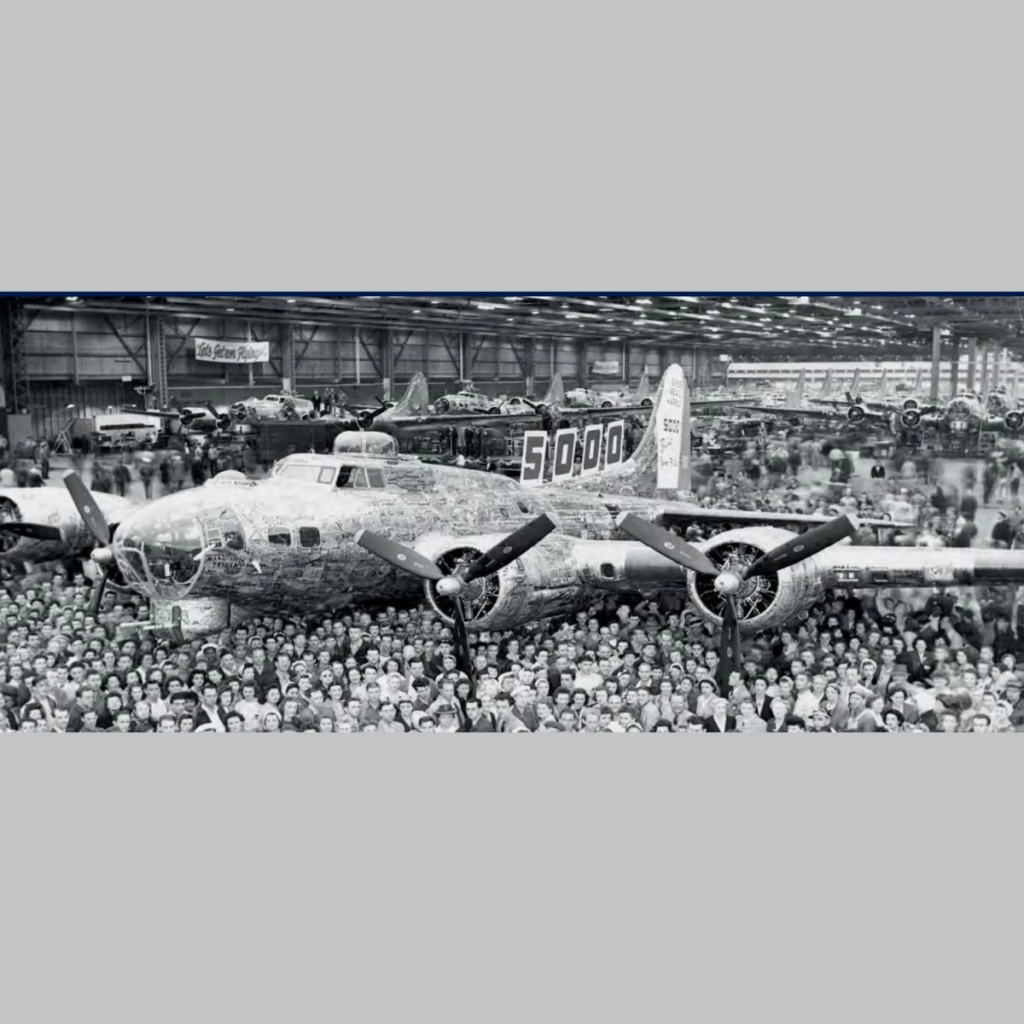
Jeff Huston explains how the 5,000th Boeing B-17 to leave the firm’s Seattle factory was signed by the men and women who built her
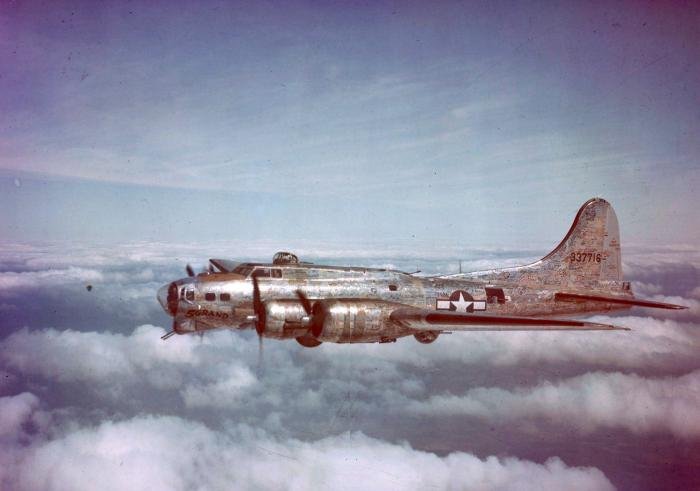
On May 12, 1944, when the swing shift at Boeing’s Plant 2 pushed one of the 16 B-17s finished that day out of the building, it marked a unique milestone. That Flying Fortress wasn’t just the 5,000th built by the company since the attack on Pearl Harbor on December 7, 1941, it was also signed inside and out by the people who constructed it.
The Flying Fortress in question, named 5 Grand, was covered with hundreds, possibly thousands, of signatures from the Seattle plant’s employees in all the colours of the rainbow. This unplanned expression of ownership was not originally condoned by the company, but once it started both Boeing and the Army Air Forces recognised public relations gold when they saw it. Boeing was at least partly responsible, when assemblies in the workshops appeared with tags bearing the legend ‘5,000th Boeing-built Flying Fortress’. According to company newsletter The Boeing News the “endorsing of Five Grand did not start out as a publicity stunt. It began spontaneously and gained momentum like a prairie fire”. There was some concern that the Army wouldn’t accept an aircraft that didn’t meet its ‘spic-and-span’ standard, but the news the autographing generated was too good to ignore.


“Will to do”
Rah-rah public relations hype aside, it was a remarkable achievement that a single company was able to deliver 5,000 large and complex combat aircraft in fewer than four years, considering just 50 B-17s had been built in the entire month of December 1941. Army Air Forces commander Gen Henry H ‘Hap’ Arnold was a man unhappy to hear the word impossible from subordinates (or industrialists). His catchphrase, “will to do”, galvanised people to solve the seemingly impossible. The idea took hold, however, and by June 1944, Boeing and its two partners in the B-17 production pool, Douglas and Lockheed, were rolling. By war’s end, Boeing had completed 6,981 of the 12,726 Flying Fortresses made.
“What impressed me the most, if you could imagine that factory just literally humming. Every hour or so the front door of that Plant 2 building opened up and an airplane went out,” Boeing employee Bill Moffett said in a 1979 interview with The Boeing News. “The people were really devoted to moving that airplane out. They had a stake in that thing,” he added. “Probably the one airplane everybody remembers the most was 5 Grand. Everybody signed it and pushed it out the door by hand.” In the same article, long-time Boeing employee Gerald Taylor explained: “We put out a set of wings in eight hours right in the middle of Plant 2, the noisiest place in the company. It was a strong plane. We couldn’t have asked for a better built plane.” West Seattle resident Georgie Kunkel, 89, told Seattle Times reporter Jack Broom in 2010: “They paid me 65 cents an hour, which was a lot more than the 20 cents I got cleaning houses.” Kunkel worked at Boeing’s Chehalis plant, drilling holes in B-17 wing panels that were shipped to Plant 2 for assembly. “Was it hard work?” Broom asked. “Not bad,” she said. “But I was young then. I thought it was cool.”

Job done! Second shift workers push ‘5 Grand’ out of Plant 2 on May 13, 1944
Company monitoring
Boeing kept track of 5 Grand after she went overseas. Pieces in the newsletter chronicled the Fortress’s passage through the modification centre at Cheyenne, Wyoming. The Duster, base newspaper at Kearney Army Air Field, Nebraska, noted on July 7, 1944 that two Seattle residents, 1st Lt Edward Unger and 2nd Lt Richard Jacobson, were assigned as pilot and co-pilot. When picked up by Boeing, the piece also noted that both men had relatives working for the company, including Lt Jacobson’s 74-year-old grandfather, Arthur Clough, whose name appeared on the aircraft’s tail. Kearney, located in south central Nebraska on the Platte River, was a port of embarkation for B-17s and crews headed for the European Theatre of Operations (ETO). Flying the bombers was both quicker and safer than sending them by ship. The aircraft were routed via Grenier Field in New Hampshire, Gander in Newfoundland and Northern Ireland’s Nutts Corner. Unfortunately, new crews didn’t get to keep the shiny new Fortresses; they were familiarised with the ETO and distributed as replacements to the various bomb groups, and the aircraft met the same fate. After further modifications in England the B-17s were sent where they were needed.

Fortress 5 Grand was finally assigned to the Eighth Air Force’s 338th Bomb Squadron, 96th Bomb Group, based at Snetterton Heath in Norfolk. A story from the August 2, 1944 Boeing News noted that the machine had reached its base in England and that “the famous Fortress may have seen action”. Letters from the UK published in the August 9 issue indicated that 5 Grand “girds for first raid” but were followed quickly by the shocking news that Boeing’s favourite B-17 force-landed during a test flight, rubbing off a number of signatures in the process. In another of the amazing coincidences that filled the pages of Boeing News, ex-Boeing worker Pte Don C Bowman, one of the groundcrew repairing the aircraft, spotted the inscription: “Hi, Don!” on the No 2 engine cowling. It was left there by his friend, William G Brier, who told Boeing News that he was equally as surprised as his friend that the “message reached his pal”. In a brilliant piece of unintended comedy, Sgt Ralph J Combs wrote a friendly note to ‘Miss’ Cleo Shelton, whose address he had found on the airframe. Regrettably, Cleo turned out to be a ‘dude’.
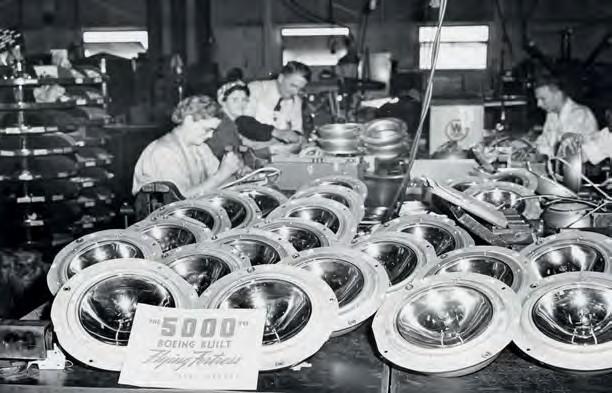
On August 9, 1944, Lt James E Robinson of Nevada City, California – and evidently a member of the 96th BG – had a Victory Mail letter to Boeing published: “Yesterday I had the pleasure of flying your 5,000th… As usual with the B-17 it is a very sweet running airplane. All your workers should be very proud to know that [it] is finally in a combat zone and will, I am sure, give a good show for itself, as have all Fortresses. I am proud to have been the first pilot to fly this ship at its overseas station.”
The regular crew of 5 Grand appeared in the October 25, 1944 Boeing News: pilot 2nd Lt Bryce H Jones, co-pilot 2nd Lt Warren B Hansen, bombardier 2nd Lt Leonard Conly, navigator 2nd Lt Frank Carter Jr, radioman S/Sgt Ruel D Nelson, waist gunner Sgt V L Ruthart, ball turret gunner Sgt W J Nagel, top turret gunner S/Sgt M J Santianna and tail gunner Sgt Frederick Meyers.
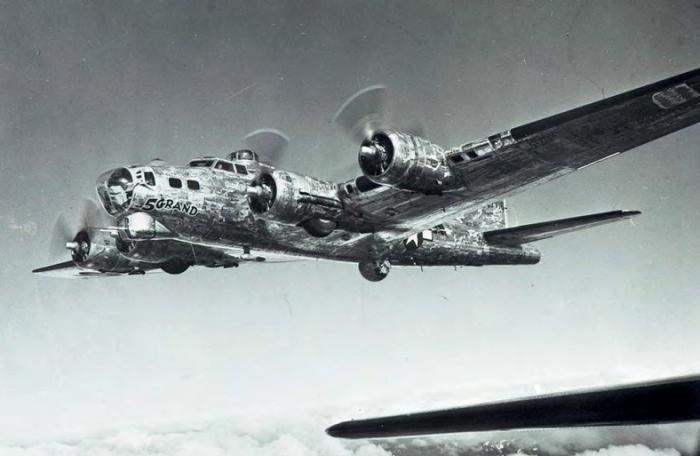
A piece in the March 8, 1945 issue was headlined “No Crewman Injured Yet.” An improbable quote from Cpl Doyle Bonds, groundcrew chief for 5 Grand, said: “Just look at some of the places where bombs were dropped – Berlin, Ludwigshafen, Merseburg, Hamburg, Osnabruck, Kassel, Cologne, Munster and many more. Those places aren’t for picnics and yet no one has ever got a Purple Heart while flying ‘our’ Fort.”
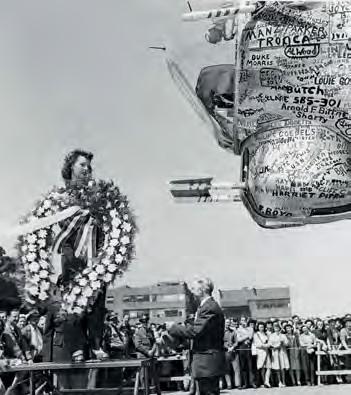
Untimely end
In June 1945, 5 Grand made a curtain call at Seattle, with 78 mission symbols painted on her tail under the large Square-C unit identifier of the 96th BG. Boeing’s Thelma Finn was photographed in the waist door of the aircraft, where she wrote her address. Thelma was another recipient of numerous letters from lonely airmen in England, according to the newsletter, although ‘Thelma’ was no doubt less confusing than ‘Cleo’. The story says the messages she received said it was “swell” the way “thousands of women stepped into the war plants to supply them with fighting equipment”.
Earl Cruzen, a member of the production flight test team, said in his canned quote from the company newsletter: “She’s gone through a lot since we saw her last. I never thought I’d get to see her again.” He also said that he recognised the No 2 engine as one on which he had worked in shop 310 during June 1944.
After her brief stint in Seattle, 5 Grand flew off into oblivion. The aircraft was held in reserve at Lubbock, Texas for a few months while Seattle and Boeing officials tried to buy her for a war memorial. The purchase was approved too late to prevent the machine’s untimely demise at a War Assets Administration scrapyard at Kingman Army Air Field, Arizona – the fate of many thousands of wartime aircraft, some flown direct from the factory.